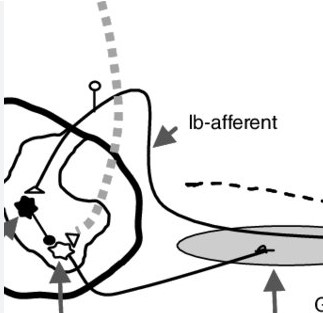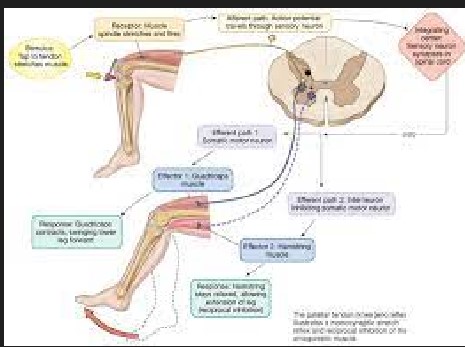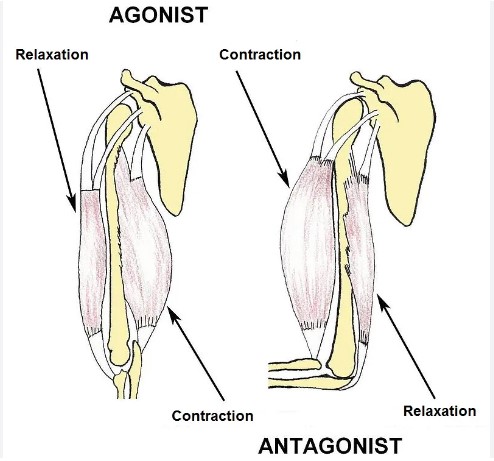The dynamic world of physical therapy and fitness embraces various techniques aimed at improving muscle function, enhancing flexibility, and facilitating pain relief. Among these, autogenic and reciprocal inhibition stand out as two fundamental mechanisms through which the nervous system regulates muscle tension and coordination. While these concepts might sound complex, they play a crucial role in our everyday movement and physical health.
Autogenic inhibition refers to a process where a muscle experiencing tension automatically relaxes, thanks to the feedback from sensory receptors within the muscle itself. Reciprocal inhibition, on the other hand, involves the relaxation of muscles opposite to those contracting, ensuring smooth and coordinated movements. These mechanisms are not just theoretical constructs but have practical applications in rehabilitating injuries, improving athletic performance, and enhancing overall physical wellbeing.
Both autogenic and reciprocal inhibition are essential for anyone looking to understand how our bodies maintain balance and coordination through the intricate interplay of muscles and nerves. They are key to developing effective training programs, overcoming physical limitations, and achieving optimal performance, whether in daily activities, sports, or therapeutic settings.

Basic Concepts
Muscle Inhibition
Definition and significance
Muscle inhibition refers to a decrease in the ability of a muscle to generate force. This phenomenon can occur for various reasons, including injury, fatigue, or as a part of natural body regulation mechanisms. Understanding muscle inhibition is crucial because it plays a significant role in preventing muscle damage and facilitating recovery. It’s a protective response that ensures our muscles don’t overexert themselves, which could lead to strains or more serious injuries.
Autogenic Inhibition
Basic understanding
Autogenic inhibition is a specific type of muscle inhibition that occurs within the same muscle that is experiencing tension. This process is mediated by Golgi tendon organs (GTOs), which are sensory receptors located at the junctions of muscles and tendons. These receptors monitor tension levels within muscles, and when tension becomes too high, they send a signal to the nervous system to relax the muscle, thus preventing damage. This self-regulatory mechanism is crucial for maintaining muscle health and preventing injuries.
Reciprocal Inhibition
Basic understanding
Reciprocal inhibition, on the other hand, involves the relaxation of muscles opposite to the ones contracting. This is an essential process for coordinating smooth and effective movements. For instance, when you bend your elbow, the biceps muscle contracts while its antagonist, the triceps muscle, relaxes. This mechanism is regulated by the nervous system and is vital for everyday activities, allowing for fluid and coordinated motions.
Autogenic Inhibition
Mechanism
How it works
The mechanism of autogenic inhibition is centered around the Golgi tendon organs. Here’s a simplified step-by-step guide:
- The muscle generates tension either through stretching or contraction.
- GTOs detect this tension and send a signal to the spinal cord.
- The spinal cord processes this information and sends a signal back to the muscle to relax.
This feedback loop is vital for protecting muscles from overstretching and tearing.
Applications
Practical uses in therapy and fitness
Autogenic inhibition is used widely in physical therapy and fitness programs to enhance flexibility, reduce stiffness, and prevent injuries. Some common applications include:
- Static stretching: Applying gentle, sustained pressure to a muscle to activate GTOs and encourage relaxation.
- Self-myofascial release: Using tools like foam rollers to apply pressure to tight muscle areas, stimulating GTOs and facilitating muscle relaxation.
Benefits
Key advantages for relaxation and rehabilitation
Autogenic inhibition offers several benefits, particularly in the context of relaxation and rehabilitation:
- Improves flexibility: By relaxing the muscle, it becomes more pliable and stretches more easily.
- Reduces risk of injury: Prevents muscles from overstretching and tearing.
- Speeds up recovery: Helps in the rehabilitation of injured muscles by promoting relaxation and reducing tension.
Reciprocal Inhibition
Mechanism
How it works
Reciprocal inhibition works through a process involving agonist and antagonist muscles. Here’s the breakdown:
- When an agonist muscle contracts, the nervous system sends a signal to the antagonist muscle to relax.
- This relaxation allows for smooth, coordinated movements without muscle conflict.
This mechanism is crucial for everyday movements and athletic performance, ensuring that opposing muscle groups work together seamlessly.
Applications
Practical uses in therapy and fitness
Reciprocal inhibition is utilized in various therapeutic and fitness contexts to improve mobility and reduce pain. It is particularly useful in:
- Dynamic stretching: Involves moving a joint through its full range of motion to engage the agonist and relax the antagonist, enhancing flexibility and movement efficiency.
- Neuromuscular reeducation: Techniques designed to improve movement patterns and coordination, especially after injury or in cases of motor dysfunction.
Benefits
Key advantages for mobility and pain relief
The benefits of reciprocal inhibition are pivotal for both everyday activities and athletic endeavors:
- Enhances mobility: By ensuring antagonist muscles relax appropriately, movements become more fluid and less restricted.
- Prevents muscle cramps and spasms: By maintaining a balance between muscle groups, it reduces the likelihood of cramps and spasms.
- Reduces pain: Helps in managing conditions like muscle tightness and spasticity, leading to pain relief and improved quality of life.

Comparative Analysis
Key Differences
The main distinction between autogenic inhibition and reciprocal inhibition lies in their mechanisms and applications. Autogenic inhibition is about a muscle relaxing itself when under tension, whereas reciprocal inhibition involves the relaxation of one muscle due to the contraction of its opposite muscle. These mechanisms play pivotal roles in physical therapy, rehabilitation, and fitness training, but they operate through different neural pathways and serve different functional purposes in body movement and muscle health.
Side-by-side comparison
- Activation Trigger: Autogenic inhibition is activated by tension within the same muscle, while reciprocal inhibition is triggered by the contraction of an opposing muscle.
- Sensory Receptors: Golgi tendon organs are key in autogenic inhibition; muscle spindles are more involved in reciprocal inhibition.
- Outcome: Autogenic inhibition primarily prevents muscle damage by relaxation, whereas reciprocal inhibition ensures smooth, coordinated movements.
Synergies
Despite their differences, autogenic and reciprocal inhibition work together seamlessly in the human body to promote efficient movement and prevent injury. For example, during a running motion, autogenic inhibition helps manage the load on muscles like the hamstrings, preventing overstretching. Simultaneously, reciprocal inhibition allows for the fluid alternation between muscle groups, such as the quadriceps and hamstrings, facilitating a smooth stride. These mechanisms highlight the body’s sophisticated ability to maintain balance and coordination.
Choosing Between Them
Factors to consider
When deciding whether to focus on autogenic or reciprocal inhibition in therapy or fitness routines, several factors come into play:
- Objective: Choose autogenic inhibition for improving flexibility and preventing muscle injuries. Opt for reciprocal inhibition to enhance coordination and fluidity of movements.
- Condition: Autogenic inhibition is ideal for individuals recovering from muscle strain or looking to increase muscle length. Reciprocal inhibition suits those needing to improve movement patterns or overcome spasticity.
- Exercise Preference: Static exercises and stretches favor autogenic inhibition, whereas dynamic movements and stretches lean towards reciprocal inhibition.
Practical Insights
Incorporating Techniques
Tips for everyday practice
Incorporating autogenic and reciprocal inhibition into daily routines can optimize physical health and performance. Here are some tips:
- Listen to Your Body: Be mindful of muscle tension and fatigue. Utilize autogenic inhibition techniques when muscles feel overworked.
- Warm-up and Cool Down: Use reciprocal inhibition exercises during warm-ups for better muscle coordination. Employ autogenic inhibition methods during cool-downs for relaxation.
- Consistency is Key: Regular practice of both types of exercises can lead to lasting benefits in flexibility, strength, and neuromuscular coordination.
Exercises Examples
Autogenic vs. Reciprocal Inhibition exercises
Autogenic Inhibition Exercises:
- Foam Rolling: Slowly roll over tight muscle groups to activate Golgi tendon organs, promoting muscle relaxation.
- Muscles: Focus on calves, thighs, and back.
- Duration: Spend 30 seconds to 1 minute on each area.
- Static Stretching: Hold a stretch position for a muscle group to induce tension and trigger autogenic inhibition.
- Example: Hamstring stretch – sit on the floor and reach forward towards your toes.
- Hold: Maintain the stretch for 20-30 seconds.
Reciprocal Inhibition Exercises:
- Dynamic Leg Swings: Stand near a wall for balance, and swing one leg forward and back. This activates the hip flexors and relaxes the hamstrings through reciprocal inhibition.
- Repetitions: Do 10-15 swings for each leg.
- Arm Circles: Extend your arms to the sides at shoulder height and perform small to large circles. This simple movement engages the deltoids and relaxes the opposing muscle groups.
- Duration: Continue for 30 seconds in each direction.
Frequently Asked Questions
What is Autogenic Inhibition?
Autogenic inhibition is a neuromuscular response that triggers muscle relaxation in response to tension. This reflex is mediated by Golgi tendon organs, which sense changes in muscle tension and signal the muscle to relax, preventing overexertion and injury. It’s a protective and regulatory mechanism that plays a crucial role in maintaining muscle health and function.
How Does Reciprocal Inhibition Work?
Reciprocal inhibition describes the process where the activation of one muscle leads to the relaxation of its antagonist muscle. This mechanism ensures smooth and coordinated movements by preventing opposing muscles from contracting simultaneously. It is fundamental in everyday movements, from walking to complex athletic maneuvers, facilitating fluidity and efficiency in physical activities.
Can These Techniques Improve Athletic Performance?
Yes, both autogenic and reciprocal inhibition techniques can significantly improve athletic performance. By incorporating specific exercises that leverage these mechanisms, athletes can enhance their flexibility, reduce muscle stiffness, and improve neuromuscular coordination. This leads to better movement efficiency, reduced risk of injury, and overall improved performance in various sports and physical activities.
Are There Specific Exercises for Autogenic and Reciprocal Inhibition?
There are numerous exercises designed to activate autogenic and reciprocal inhibition mechanisms. For autogenic inhibition, techniques such as static stretching and self-myofascial release can be effective. Reciprocal inhibition can be stimulated through dynamic stretching and specific conditioning exercises that focus on coordinated muscle activation. Tailoring these exercises to individual needs can maximize their benefits.
Conclusion
Autogenic and reciprocal inhibition represent two pillars in the understanding of muscular coordination and relaxation. Through the exploration of these mechanisms, we gain insight into the sophisticated ways our bodies achieve movement and maintain balance. These principles not only enrich our comprehension of physical health but also offer practical strategies for enhancing it.
Embracing the knowledge and application of autogenic and reciprocal inhibition can transform our approach to fitness, rehabilitation, and everyday physical activities. By understanding and utilizing these mechanisms, individuals can achieve greater physical harmony, efficiency, and resilience, marking a significant step towards optimal health and performance.

